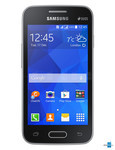Chrome 90 Brings Few User-Facing, Plenty Of Behind-The-Scenes Changes - Android
Chrome 90 is now rolling out on desktop platforms, bringing a few UI and feature changes and lots of under-the-hood adjustments. That’s based on a recent report from 9to5Google, highlighting what users should expect from this Android and desktop-first update. The biggest news for Android seems to be the introduction of Chrome Lite mode. Previously [...]
Read More...
The post Chrome 90 Brings Few User-Facing, Plenty Of Behind-The-Scenes Changes appeared first on Android Headlines.

Chrome 90 is now rolling out on desktop platforms, bringing a few UI and feature changes and lots of under-the-hood adjustments. That’s based on a recent report from 9to5Google, highlighting what users should expect from this Android and desktop-first update.
The biggest news for Android seems to be the introduction of Chrome Lite mode. Previously referred to as Data Saver, that now reduces data usage and more, even more significantly. It will also reduce the effective bitrate of videos over mobile connections and compress HTTPS images more thoroughly.
Beyond that, Chrome 90 will also introduce changes to enable users to hide the Reading List. That can now be tucked out of sight by right-clicking the Bookmark Bar. The new option appears near the bottom of the menu.
Similarly, Google will also be launching a wider trial of URL hiding. The company will hide the full URL unless users choose to show it. So users can easily see whether the underlying domain they’ve visited is familiar and is the appropriate one. Users can disable the change by right-clicking the address bar. Then, they need to select the “Always show full URLs” option from the resulting menu.
Another change is Google’s pop-up prompt blocking. The Chrome browser will now automatically block those, such as those that appear for notifications from sites. Users who want to see the blocked pop-ups will need to access deeper options via a click on the new strike-through bell-icon in the address bar.
Finally, Chrome on desktop now fully supports AV1, with the introduction of that protocol’s encoder. That’s designed with optimizations to help with the efficiency of video compression in video conferencing. Specifically on low bandwidth networks — that’s 30kbps or less — without compromising video quality. The decoder was added back in Chrome 70.
So what are the Chrome 90 changes under the hood?
Under the hood, Chrome 90 introduces the previously reported HTTPS changes — only loading HTTP if a site absolutely requires it. And version 9 of the V8 JavaScript engine is introduced with Chrome 90 too. As is WebXR Depth-Sensing API for Chrome. The latter change allows AR experiences to improve across occlusion and physics categories. In effect, by allowing Chrome to better recognize the physical distance between the user’s device and real-world objects.
Beyond that, on Windows, Chrome 90 tacks in support of Intel’s Control-Flow Enforcement Technology where hardware allows. And preferences for controlling FloC in Chrome Settings are appearing too. Those are found in Settings, Privacy and Security, and Privacy Sandbox, more directly. While not rolling out widely just yet, it is making its first appearance in limited testing.
In that same vein, PDF XFA forms are now partially supported in Chrome 90.
This version is rolling out now
As noted above, this version of the Chrome browser is already rolling out now. In fact, it started rolling out earlier this week. So users on desktop computers — Mac, Linux, and Windows — and Android will want to start checking for that now.
Chromebooks, conversely, won’t start seeing the update arrive until April 20 with that platform’s own rollout. And there will undoubtedly be a few differences in the update features and changes for Chrome OS 90 too. With that rollout taking a few days to a few weeks to complete, just like the current one.
 Chrome 90 contains just a few user-facing changes
Chrome 90 contains just a few user-facing changesThe post Chrome 90 Brings Few User-Facing, Plenty Of Behind-The-Scenes Changes appeared first on Android Headlines.
15/04/2021 08:56 PM
Samsung Galaxy Tab S7 Lite 5G Renders Appear Online In Full Glory
15/04/2021 05:19 PM
B+H has an unbeatable deal on the OnePlus 8 with just hours left
15/04/2021 07:34 PM
Grab a pair of Samsung Galaxy Buds+ earphones and save $50
15/04/2021 04:45 AM
US expels Russian diplomats in response to SolarWinds hack
15/04/2021 03:52 PM
Ubisoft delays Assassin's Creed Valhalla's first major expansion to May 13th
15/04/2021 09:50 AM
Adidas' Stan Smith Mylo are its first mushroom leather sneakers
15/04/2021 03:00 PM
- Comics
- HEALTH
- Libraries & Demo
- Sports Games
- Racing
- Cards & Casino
- Media & Video
- Photography
- Transportation
- Arcade & Action
- Brain & Puzzle
- Social
- Communication
- Casual
- Personalization
- Tools
- Medical
- Weather
- Shopping
- Health & Fitness
- Productivity
- Books & Reference
- Finance
- Entertainment
- Business
- Sports
- Music & Audio
- News & Magazines
- Education
- Lifestyle
- Travel & Local







